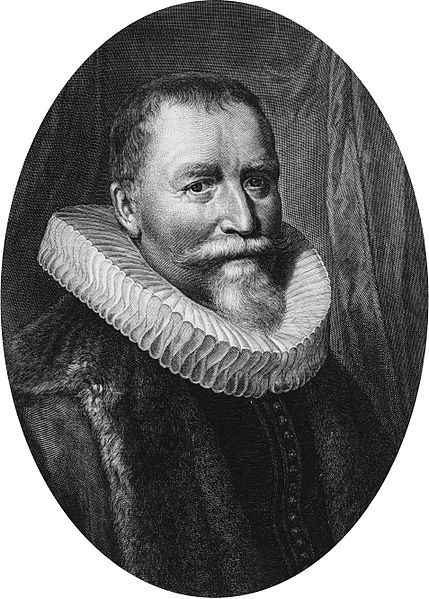Samuel Blommaert was a Flemish/Dutch merchant and director of the Dutch West India Company from 1622 to 1629 and again from 1636 to 1642. In the latter period, he was a paid commissioner of Sweden in the Netherlands and he played a dubious but key role in Peter Minuit's expedition that led to the Swedish colonizing of New Sweden. For years Blommaert was involved in the copper trade and industry. In 1645 he was appointed for a third time as a manager of the WIC, being one of the main investors from the beginning.
Samuel Blommaert (1583-1651)
Portrait of Gerard Reynst, Blommaert's father-in-law
In 1615 Gerrit Reynst became the owner of an empty lot, now Prinsengracht 2; his heirs, two daughters who married Samuel Blommaert and Isaac Coymans sold the lots in 1617, 1618 and 1622.
The Dutch West India Company or WIC Dutch pronunciation: [ʋɛstˈɪndisə kɔmpɑˈɲi] was a chartered company of Dutch merchants as well as foreign investors, formally known as GWC. Among its founders were Reynier Pauw, Willem Usselincx (1567–1647) and Jessé de Forest (1576–1624). On 3 June 1621, it was granted a charter for a trade monopoly in the Dutch West Indies by the Republic of the Seven United Netherlands and given jurisdiction over Dutch participation in the Atlantic slave trade, Brazil, the Caribbean, and North America.
The West India House, headquarters of the Dutch West India Company from 1623 to 1647
Reinier Pauw, Portrait by Jan Anthonisz. van Ravesteyn
Willem Usselincx, co-founder of the Dutch West India Company
The Zwaanendael Colony along the Delaware







